1. Introduction
IICS stands for Informatica Intelligent Cloud Services popularly known as Informatica Cloud. It is a next-generation iPaaS (Integration Platform as a Service) solution offered by Informatica that allows you to exchange data between any combination of on-premise and cloud based applications within individual or across multiple organizations.
Before we get to understand the IICS Architecture, let us discuss in detail about each individual component in the Architecture.
2. Informatica Cloud as an iPaaS solution
Informatica Cloud satisfies the core requirements of iPaaS based application which are
- Access it from any machine with an Internet access and web browser application. When you access the IICS application, your browser connects to Informatica Cloud Services through a secure HTTP.
- A common platform with multiple wizards that guide to build and test your Integration tasks.
- Enterprise Orchestration of processes built.
- Centralized monitoring capabilities to track the progress and result of jobs.
- Preconfigured Integration templates for various recurring business use cases.
- Real-time data integration and bulk data integration services.
- Provides connectors to connect to external data sources and connector sdk to build custom connectors
3. Informatica Cloud Services
Informatica Intelligent Cloud Services offers a suite of cloud-native services that enables organizations to perform cloud-native data integration, application and API integration and data management via private, public, hybrid or multi-cloud.
The services offered to you depends on the license of your Organization.
3.1 Administrator
- Create Users, User Groups and assign them roles.
- Define runtime environments.
- Define connections for Source and Targets.
- Use Add on connectors for connecting to cloud.
- Configure schedules to run integration tasks.
3.2 Data Integration
- Develop batch jobs using variety of tasks like Mapping task, Synchronization task, Replication task, Taskflows etc.
- Execute On demand, on schedule & real time events.
- Import and Export IICS tasks.
3.3 Monitor
- Allows to monitor tasks and taskflows.
- Monitor session logs, job status and error logs.
- Allows you to stop or restart a job.
3.4 Discovery IQ
- Provides a comprehensive view of your product usage and usage.
- Provides contextual recommendation and best practices.
3.5 Application Integration
- Allows you to perform real-time web service-based integration of processes, applications, and systems.
- Allows you to design, integrate, and implement business processes spanning different cloud and on-premise applications.
3.6 Application Integration Console
- Provides monitoring and management capabilities for Application Integration
3.7 API Manager
- Manages the APIs for services and processes built in Informatica CAI.
- Seamless integration with Informatica CAI.
- Access to APIs description and metadata.
- Policy management.
- API analytics.
3.8 API Portal
- Provides users with secure access to the created APIs.
- Enables users to interact with managed APIs and view API usage analytics.
4. Informatica Cloud Repository
Informatica Cloud Services includes the IICS repository that stores various information about tasks. As you create, schedule, and run tasks, all the metadata information is written to IICS repository.
The various information that gets stored to IICS repository include
- Source and Target Metadata: The metadata of source and target objects which includes field names, data type, precision, scale and any other information of source and target objects gets stored in IICS repository.
- Mappings: The metadata of mappings and their transformation rules gets stored in IICS repository.
- Connection Information: The repository stores the connection information that enables you to connect to specific sources and target systems in encrypted format.
- Schedules: The repository stores the schedule details of the tasks configured in IICS.
- Logging and Monitoring Information: The status of all the jobs triggered in the org is stored in the IICS repository.
The IICS repository is maintained completely by Informatica unlike the on-premise tools like Powercenter where repository is maintained by the user. Hence the users do not have any direct access to the metadata stored in Informatica repository.
5. Informatica Cloud Secure Agent
The Informatica Cloud Secure Agent is a light weight, self-upgrading program that runs on the server inside your network. The Secure Agent is available for Windows and Linux servers.
- It allows you to access all your local resources like databases, files and applications that reside beside your company firewall.
- It is responsible for securely communicating between the Informatica Cloud Repository, other cloud based applications and your local resources.
- Informatica Cloud Secure Agent is the local agent on your server that runs the tasks and is responsible for moving data from source to target.
- During this process, your source application data never gets staged or run through Informatica Informatica Cloud servers. Your data remains secure and behind your company firewall.
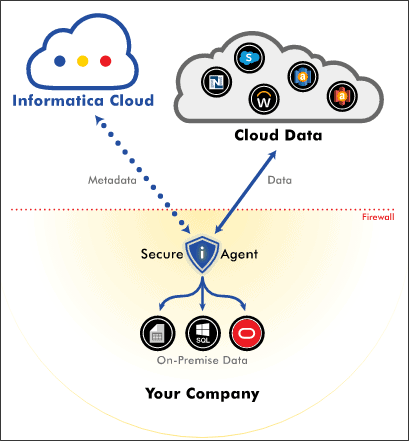
When you install Secure Agent on your server you need to register it with Informatica Cloud repository using the unique registration code provided for your organization account. You can install only one agent per machine. Once a secure agent is registered, a Runtime Environment is created in your IICS Org.
However you can install same agent on multiple machines like on a Windows and a Linux machine with in your network and register with IICS repository. Each agent can only access the resources available in their installed machines and you need to use the specific Runtime Environment in tasks you build to access them.
Additional agent requires additional license fee.
Check out our Instagram Post on Secure Agent
6. IICS Architecture
All the components discussed so far constitute the Informatica Cloud Architecture.
- Informatica Cloud as an iPaaS solution.
- Informatica Cloud Services.
- Informatica Cloud Repository.
- Informatica Cloud Secure Agent.
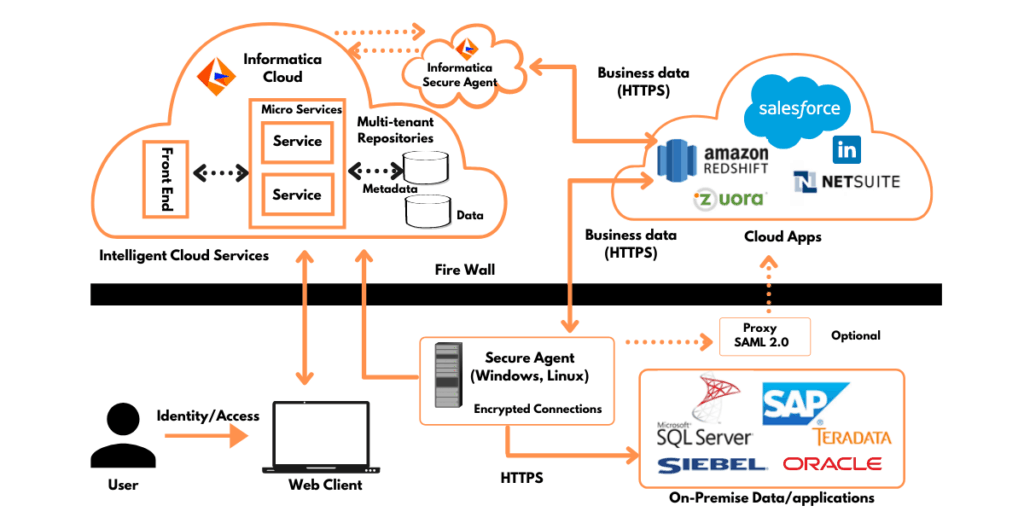
Let’s walk through step-by- step understanding the role of each component in the IICS Architecture.
- As an end user you start accessing Informatica cloud services via browser for design time and administration.
- During the design time as you start developing mappings, Informatica cloud services will talk to your actual data sources residing on on-premise or on cloud via Secure Agent.
- The source and target metadata consisting of table names, fields, data type etc. are given back to the web browser via Informatica Cloud servers.
- Once you save the design then the metadata is actually stored into Informatica Cloud repository.
- When you run the task, Secure Agent extracts the task metadata XML into the secure agent machine from IICS repository. It parses the XML data and then start connecting to your data sources and process the data.
- The Secure Agent extracts the metadata XML file into below location in your secure agent installed machine.<Informatica Cloud Secure Agent installed Directory>\apps\Data_Integration_Server\data\metadata
- Once the data processing is done via the IICS task, secure agent will send back the statistics to the Informatica Cloud repository.
- The end user can access these statistics via the Monitor through the web browser.
Apart from the data preview, Informatica only reads your metadata. At any given point of time your data is always receding behind your company firewall.
Subscribe to our Newsletter !!
Related Posts:

Learn how to restart Informatica Cloud secure agent and its individual services in Linux and Windows machines.
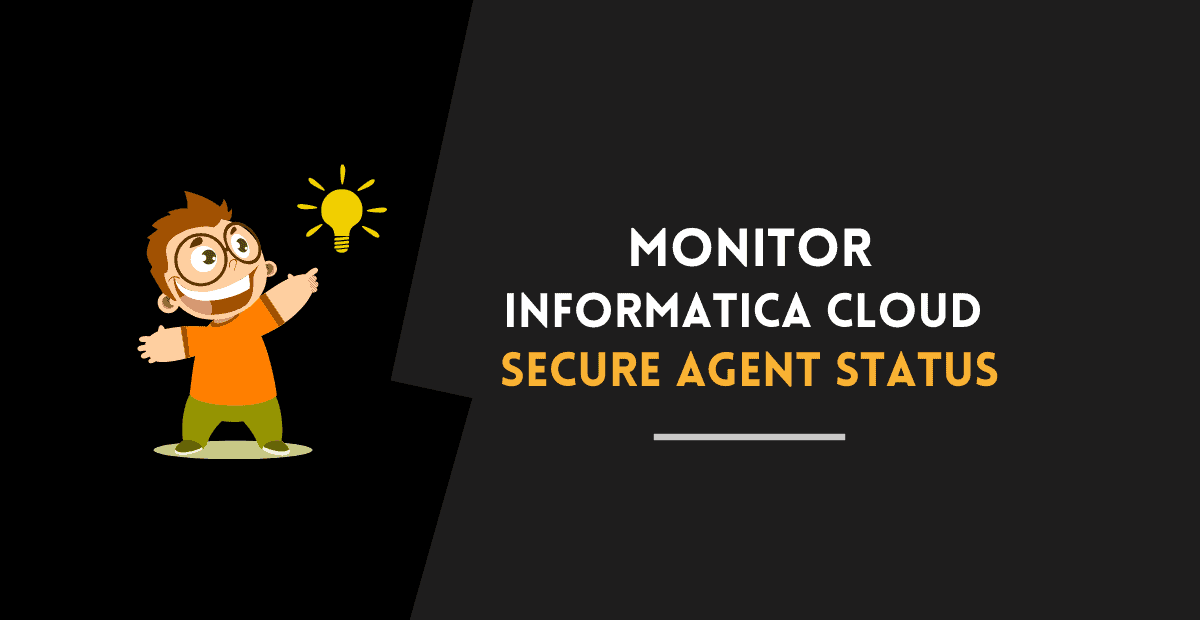
Learn how to check the status of Informatica Cloud Secure Agent and its individual services in Linux and Windows machines in various methods.
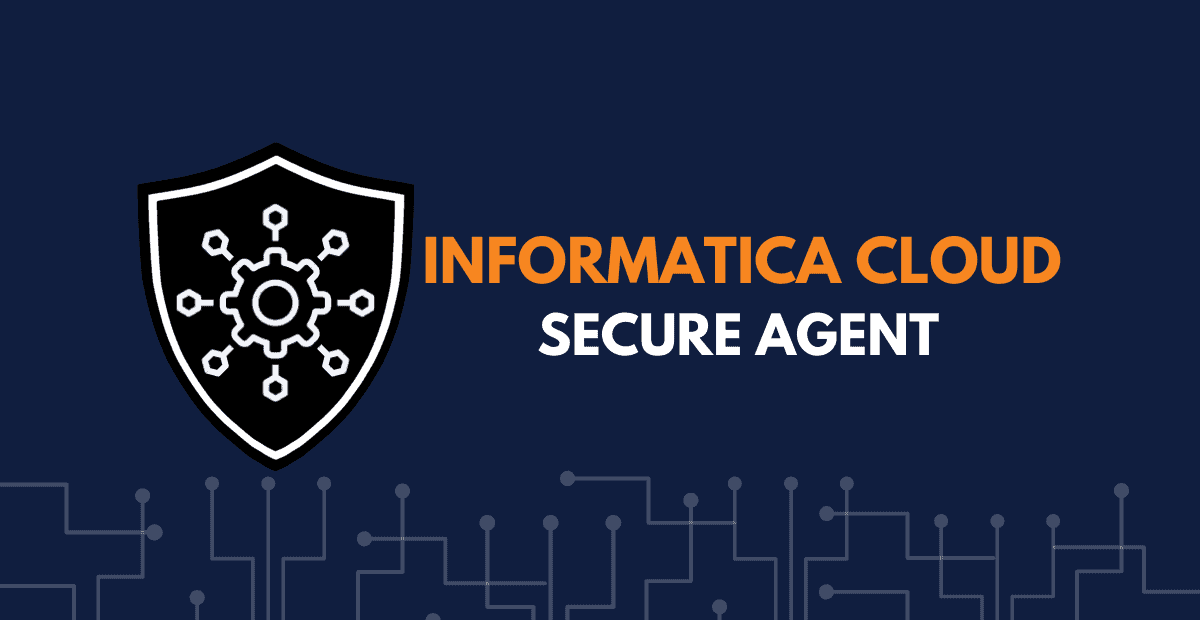
IICS Secure Agent runs all tasks and enables secure communication across the firewall between your organization and Informatica Intelligent Cloud Services.

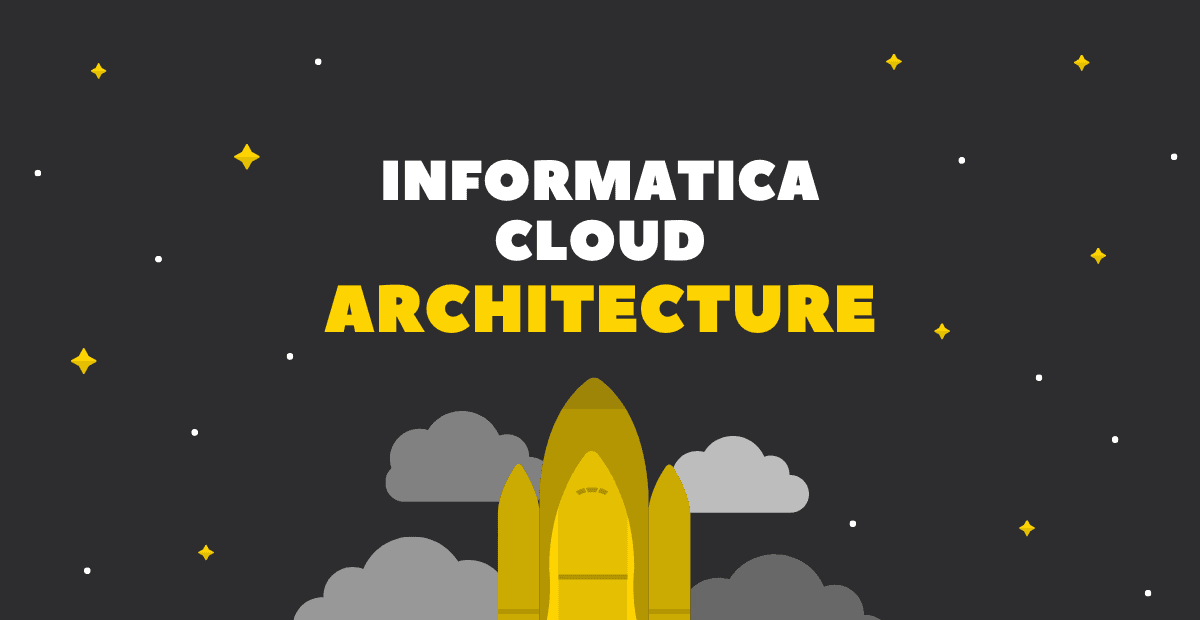



Thanks for your steps and the architecture diagram that made me to understand the IICS components process flow.
Thank you!! Glad it helped😊
Please support us by following on various social media platforms.
Hi, Can you please help me to understand what is Synchronization task used for ? Because the same we can do in mapping. Then in which scenario we would go for Synchronization task? Please help me to understand
Hi Mukesh,
A Synchronization Task is a simplified version of a mapping with limited functionalities. Yes, what we can do using synchronization task can be done in a mapping.
-> A Synchronization task helps building simple 1:1 mappings with limited transformation of data.
-> It is easy to follow and implement ETLs for those who do not have experience working with Informatica mappings.
-> A mapping needs to be linked to a Mapping Task however small the logic implemented in it to schedule where as scheduling can be directly implemented in a Synchronization task.
Hope this helps!!
can you please tell can we include router or multiple targets in Data syncronization task ?
No we can’t include any transformations or add multiple targets in Data Synchronization task.
Hi Team .. thank you so much for detailed explanation. Can you please add full tutorial for iics ?
Hi Raghava,
Please find all our blog posts sorted properly in a step by step manner to follow from basics
https://thinketl.com/catalogue/
Hope this helps!!
Excellent, thanks for the detailed description for the each topic.
Thank you. Glad it helped!!